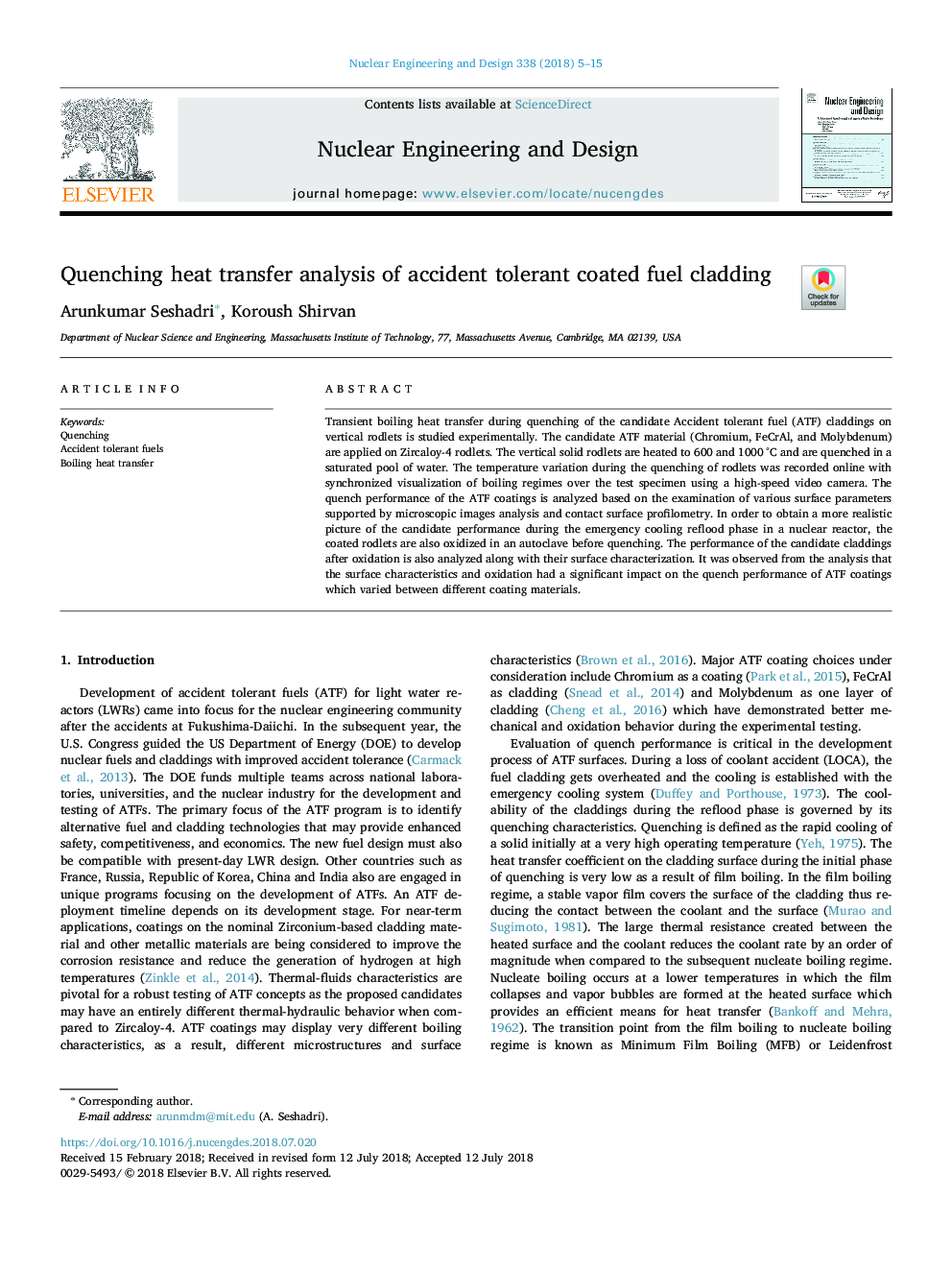| Article ID | Journal | Published Year | Pages | File Type |
|---|---|---|---|---|
| 6758514 | Nuclear Engineering and Design | 2018 | 11 Pages |
Abstract
Transient boiling heat transfer during quenching of the candidate Accident tolerant fuel (ATF) claddings on vertical rodlets is studied experimentally. The candidate ATF material (Chromium, FeCrAl, and Molybdenum) are applied on Zircaloy-4 rodlets. The vertical solid rodlets are heated to 600 and 1000â¯Â°C and are quenched in a saturated pool of water. The temperature variation during the quenching of rodlets was recorded online with synchronized visualization of boiling regimes over the test specimen using a high-speed video camera. The quench performance of the ATF coatings is analyzed based on the examination of various surface parameters supported by microscopic images analysis and contact surface profilometry. In order to obtain a more realistic picture of the candidate performance during the emergency cooling reflood phase in a nuclear reactor, the coated rodlets are also oxidized in an autoclave before quenching. The performance of the candidate claddings after oxidation is also analyzed along with their surface characterization. It was observed from the analysis that the surface characteristics and oxidation had a significant impact on the quench performance of ATF coatings which varied between different coating materials.
Related Topics
Physical Sciences and Engineering
Energy
Energy Engineering and Power Technology
Authors
Arunkumar Seshadri, Koroush Shirvan,
